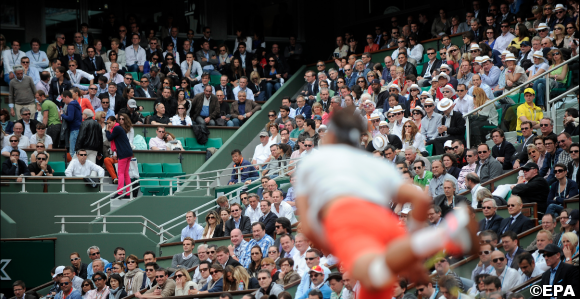Roland Garros And The City Of Paris Formally Announce New Plans
The day prior to the start of Roland Garros, the French Tennis Federation (FFT) and the City of Paris presented a progress report about the modernization of stadium and surrounding areas.
However, turning their plans into fruition won’t be easy as in March an administrative tribunal declared their agreement with the City of Paris illegal, siding with the local environmental and community associations, which claim the new development would harm the neighboring botanic gardens that they are planning to expand into.
FFT President Jean Gachassin reaffirmed his unwavering determination in seeing this project through.
“It is our duty to successfully carry out this modernization project in order to guarantee the longevity of an event that contributes to our country’s global standing. Our duty is to reconcile our practical requirements with our desire to help make the neighborhood more attractive. We would like to provide a wonderful backdrop for one of the world’s greatest sporting events.”
Anne Hidalgo, First Deputy Mayor of Paris, underscored the importance of the French Open for the image of the capital on the international stage.
“Roland Garros is a major event and is an integral part of the city’s heritage,” she said. “The tournament is a showcase for Paris and no one wants that to end. Paris is a global capital. And it is extremely important to respect this status, by strengthening the events that contribute to it, like the French Open.”
Gilbert Ysern, Managing Director of the FFT and tournament director, made a detailed presentation of the future Roland-Garros venue, highlighting the “unbreakable” link between the French Open and the Porte d’Auteuil location.
“We are very committed to staying in this magical site, Ysern said. “Identity is at the heart of the choice. We have no intention of having the biggest facilities in the world. By staying here, we are making the deliberate decision to put quality ahead of quantity. Our approach consists of continually improving the tournament and not continually making it bigger.”
A new agreement has been signed between the FFT and the City. New building permits will be filed in two months’ time with the plans changed a bit in order to get the support of environmentalists
“It really addresses our concerns and all our needs will be met with these new facilities, “Ysern said. “But we also know that this project is conducted in whole respect of whatever needs be respected, be it French law, be it the environment, be it the architecture. We are in a gorgeous place that is part of Paris and it bears a lot of history. All of this is 100 per cent respected in our project, so we don’t see why and how in the end we could not be allowed to develop that.”
Plans include renovating and putting a retractable roof on the main stadium, Phillipe Chatrier, which will lead to night tennis for the first time.
“The roof, it is like plane wings folding up one over the other,” Ysern said. “It can be opened and closed in a few minutes. It will take about 10 minutes for the roof to be closed.”
The Court 1 (the famous Bull ring) will be knocked down and a new 500-seat stadium built in the gardens, if approved. The FFT says that none of the greenhouses will demolished and that they will actually add new ones.
The expansion will add another 3,900 square meters to the site.
The FFT and the City are hopeful that work will begin in 2015, with the new Court 1 to be completed in 2017 and Chatrier to be ready in 2018. The estimated cost of the project has now risen to $438 million US dollars, well above the original estimate.
©Daily tennis News Wire
Topics: FFT, French Open, French Tennis Federation, Gilbert Ysern, Paris tennis news, Roland Garros, Tennis News


10sBalls Top Stories
- Reasons Behind the Increase in Sex Shops
- Reasons Behind the Increase in Sex Shops
- Reasons Behind the Increase in Sex Shops
- Casibom: Yaşayan Casinolar ve Bahisler Lider Platform
- Sea Star Casino: Play Games Without Registering Online
- JETZT DEN SWEET BONANZA SLOT GRATIS DREHEN
- Азартные игры с Мостбет Казино – испытайте удачу
- Çevrimiçi en iyi yuvalar: Hizmetinizde Karavan Bet Casino
- Top No Deposit Free Spins Offer for Canadians – December 2024
- Abe Bet Casino: Ücretsiz dönüşlerle heyecan hissedin
- Ünlü slotlar çevrimiçi kumarhanelerde başarı bet giriş ücretli formatta
- BasariBet Casino Giriş – En Güzel Canlı Casino Oyunlarına Katılın
- Игра на деньги в казино 1вин казино: безопасность
- De parking de credits sans oublier les Diction Casino Archive sauf que Perception
- Играть в хитовые слоты в надежных клубах azino777





 Roland Garros And The City Of Paris Formally Announce New Plans |
Roland Garros And The City Of Paris Formally Announce New Plans |